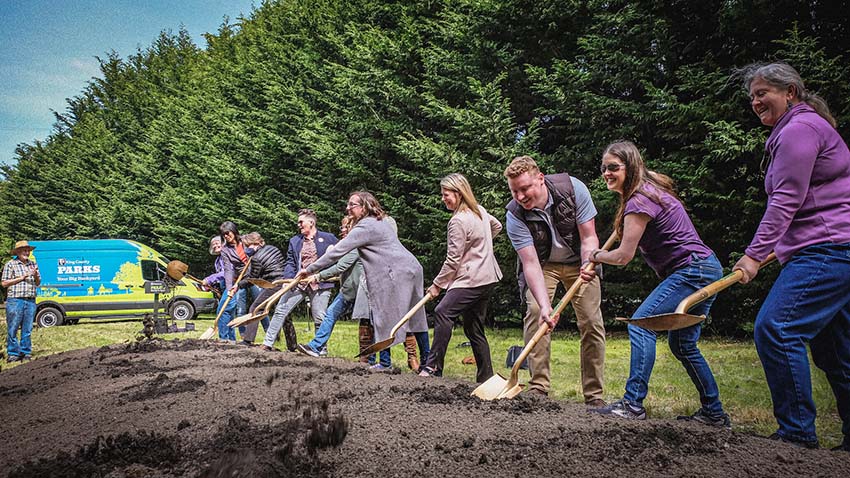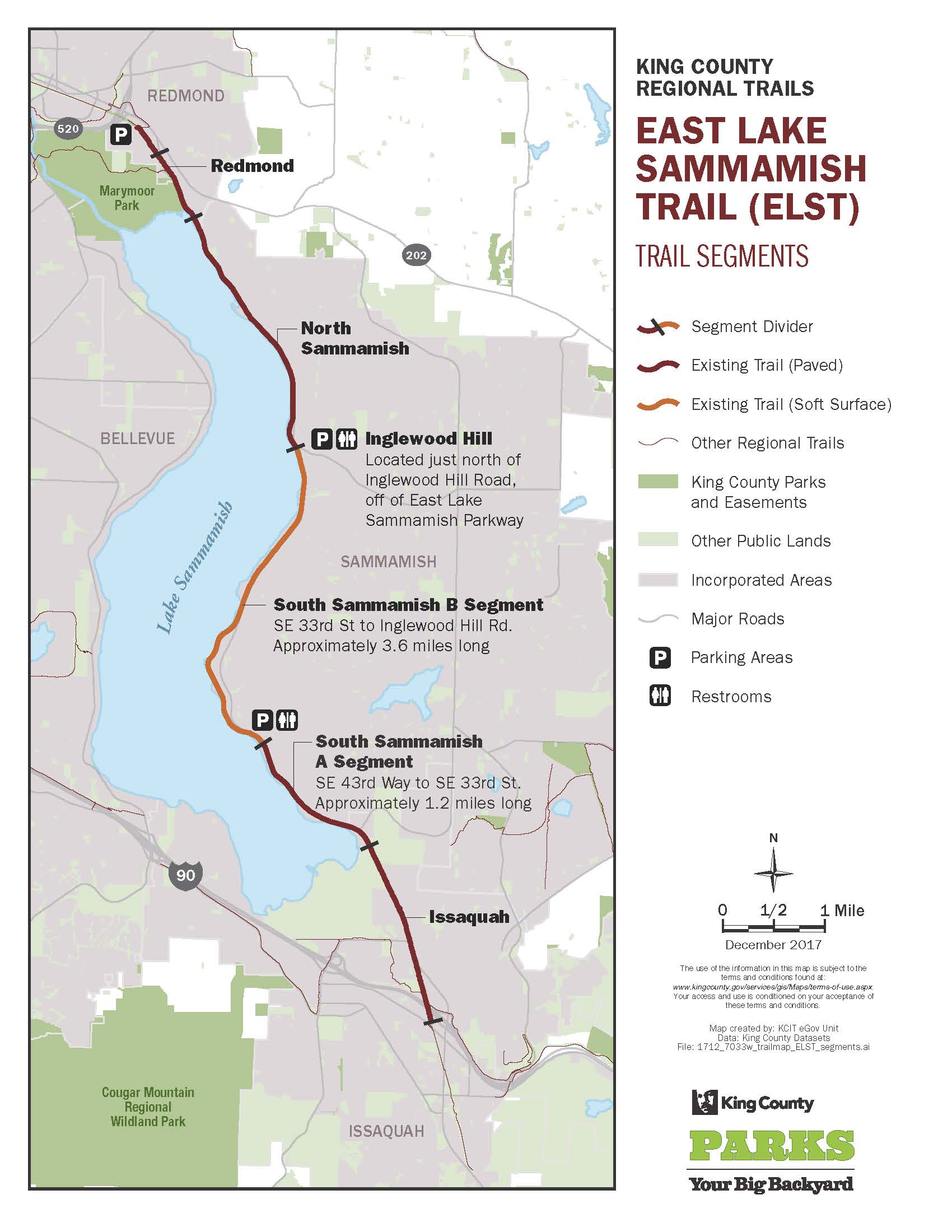King County Parks begins construction on the final segment of East Lake Sammamish Trail, connecting Puget Sound to Cascade foothills
Summary
Construction on the final segment of King County Parks' East Lake Sammamish Trail will begin June 1. It will be the last unpaved gap in a project to create a 44-mile paved regional trail corridor that connects neighborhoods from the Puget Sound shoreline to the Cascade foothills.
Story

King County Parks on Wednesday broke ground on the final segment of the 11-mile East Lake Sammamish Trail, which will offer paved trail from the Puget Sound shoreline to the Cascade foothills when construction is complete late next year.
Crews will start construction June 1 on the 1.9-mile trail segment, which will run alongside Lake Sammamish from Pine Lake Creek to Inglewood Hill Road in Sammamish. Once complete, it will offer connections to other regional trails and to light rail stations scheduled to open in 2024.
“I am very excited about completing this final segment of the East Lake Sammamish Trail because it means better connections between neighborhoods, retail centers, transit options, plus parks and other trails in our region,” said King County Councilmember Sarah Perry.
This new segment of East Lake Sammamish Trail is the final unpaved stretch of the 44-mile “Locks to Lakes Corridor” that connects Seattle to the Eastside and the Cascade foothills via the Burke-Gilman, Sammamish River, Marymoor Connector, East Lake Sammamish Trail, and Issaquah-Preston regional trails.
The East Lake Sammamish Trail provides convenient access to recreation, employment, and retail destinations in the cities of Redmond, Sammamish, and Issaquah.
The trail follows an historic railroad route along the eastern shore of Lake Sammamish. At its southern end, the trail links to King County’s Issaquah-Preston Trail. At its northern end, it connects to the Marymoor Connector Trail in Marymoor Park, which connects to the Sammamish River Trail and to Sound Transit's new Link Light Rail stations in Redmond.
The final trail segment will be built to the same standards users enjoy on all trails in King County’s portion of Leafline, the emerging trail network that will connect King, Pierce, Snohomish, and Kitsap counties. It will feature a 12-foot-wide asphalt surface with 2-foot-wide gravel shoulders on each side of the paved pathway, plus rest areas, safer driveway intersections, fencing, and signage.
Crews will install new culverts that allow for fish passage, plant native vegetation, and install landscaping features along the trail. The segment from Pine Lake Creek to Inglewood Hill Road will be closed during construction, which is expected to wrap up in late 2023.
Construction costs are estimated at about $16.9 million with funding generated by the voter-approved King County Parks Levy.
King County purchased the 11-mile East Lake Sammamish rail-banked corridor in 1998, opening a narrower, gravel-surfaced interim trail in 2006.
Relevant links
- VIDEO: Full coverage of groundbreaking ceremony
- East Lake Sammamish Trail
- Leafline: A regional trail network connecting King, Pierce, Snohomish, and Kitsap counties
- PHOTO GALLERY: Breaking ground on the final segment of East Lake Sammamish Trail
Quotes
Construction on this final stretch of the East Lake Sammamish Trail is a welcome milestone in our work to provide people in King County of all ages and abilities with equal access to safe, protected trails they can use to get to work, get exercise, or spend time enjoying the outdoors with their families.
I am very excited about completing this final segment of the East Lake Sammamish Trail because it means better connections between neighborhoods, retail centers, transit options, plus parks and other trails in our region.
For more information, contact:
Doug Williams, Department of Natural Resources and Parks, 206-477-4543

 Translate
Translate
